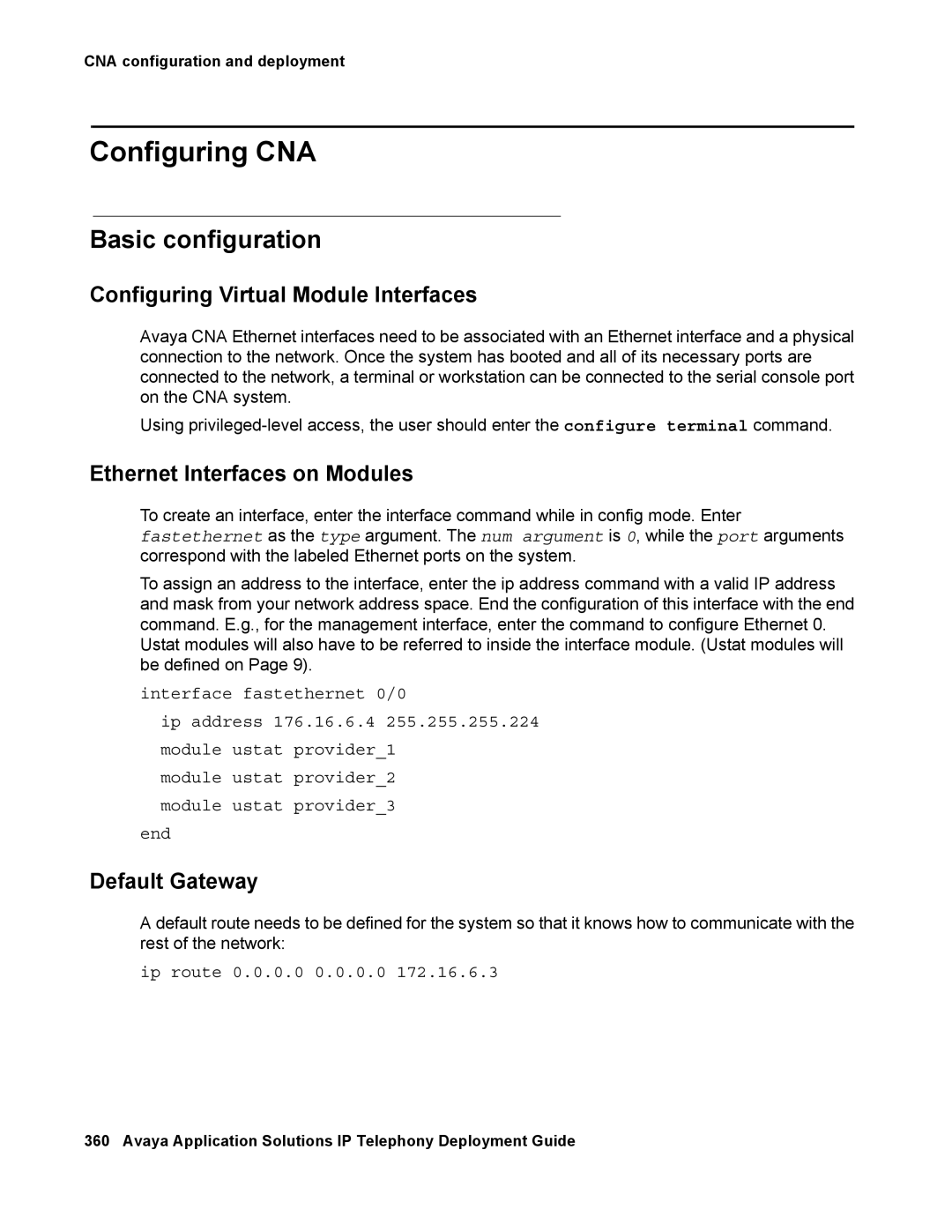
CNA configuration and deployment
Configuring CNA
Basic configuration
Configuring Virtual Module Interfaces
Avaya CNA Ethernet interfaces need to be associated with an Ethernet interface and a physical connection to the network. Once the system has booted and all of its necessary ports are connected to the network, a terminal or workstation can be connected to the serial console port on the CNA system.
Using
Ethernet Interfaces on Modules
To create an interface, enter the interface command while in config mode. Enter fastethernet as the type argument. The num argument is 0, while the port arguments correspond with the labeled Ethernet ports on the system.
To assign an address to the interface, enter the ip address command with a valid IP address and mask from your network address space. End the configuration of this interface with the end command. E.g., for the management interface, enter the command to configure Ethernet 0. Ustat modules will also have to be referred to inside the interface module. (Ustat modules will be defined on Page 9).
interface fastethernet 0/0
ip address 176.16.6.4 255.255.255.224 module ustat provider_1
module ustat provider_2 module ustat provider_3
end
Default Gateway
A default route needs to be defined for the system so that it knows how to communicate with the rest of the network:
ip route 0.0.0.0 0.0.0.0 172.16.6.3
